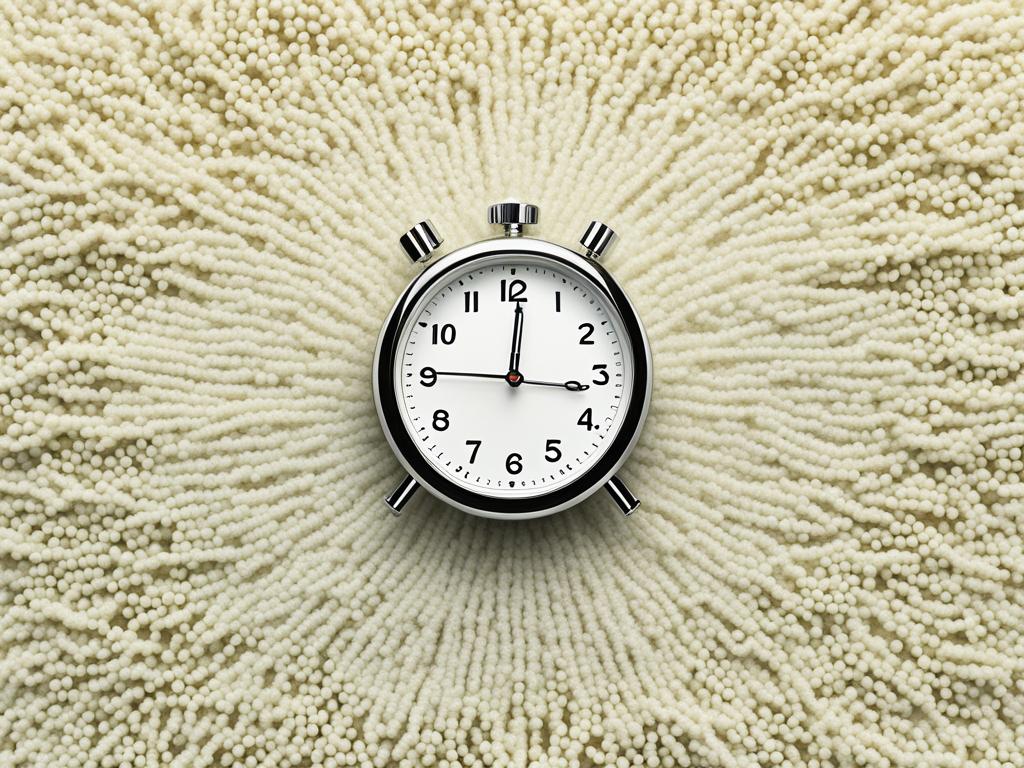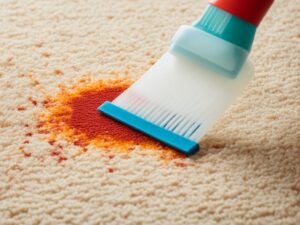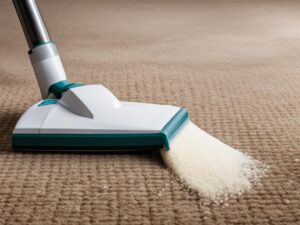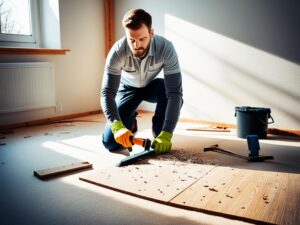Canine parvovirus, commonly known as parvo, is a highly contagious virus that can survive for a long time in carpets. Understanding how long parvo can live in carpets is essential for effectively preventing its spread and protecting your pets.
Parvo is a non-enveloped virus, which means it lacks a protective membrane. This characteristic makes it stronger and more resistant to disinfection than enveloped viruses. If a carpet is contaminated with parvo, the virus can remain viable for months, posing a risk to other animals that come into contact with it.
Key Takeaways:
- Parvo, a highly contagious virus, can survive for a long time in carpets.
- Parvo is a non-enveloped virus, which makes it more resistant to disinfection.
- Contaminated carpets can pose a risk to other animals for several months.
- Proper cleaning and disinfection are necessary to remove parvo from carpets.
- Vaccination and preventive measures are crucial in protecting pets from parvo.
How to Clean and Disinfect Carpets
To effectively clean and disinfect carpets contaminated with parvo, follow these steps:
- Remove organic material: Clean up any stool or vomit from the carpet and discard heavily soiled items. Wash bedding and toys through a soap/bleach cycle, and spray down outside areas with water to remove dried waste.
- Choose an effective virucidal disinfectant: Use a disinfectant that has been proven to kill parvo, such as bleach, potassium peroxymonosulfate, or accelerated hydrogen peroxide. Dilute the disinfectant to the proper concentration and saturate the carpet with the solution, allowing for the proper contact time.
- Steam clean carpets: For porous surfaces like carpets, use a carpet cleaner with a disinfectant to steam clean the area. Follow the instructions on the carpet cleaner and spot test for staining before applying the disinfectant.
- Allow for thorough drying: After disinfecting, ensure that the carpets are allowed to dry completely to prevent any remaining virus from surviving.
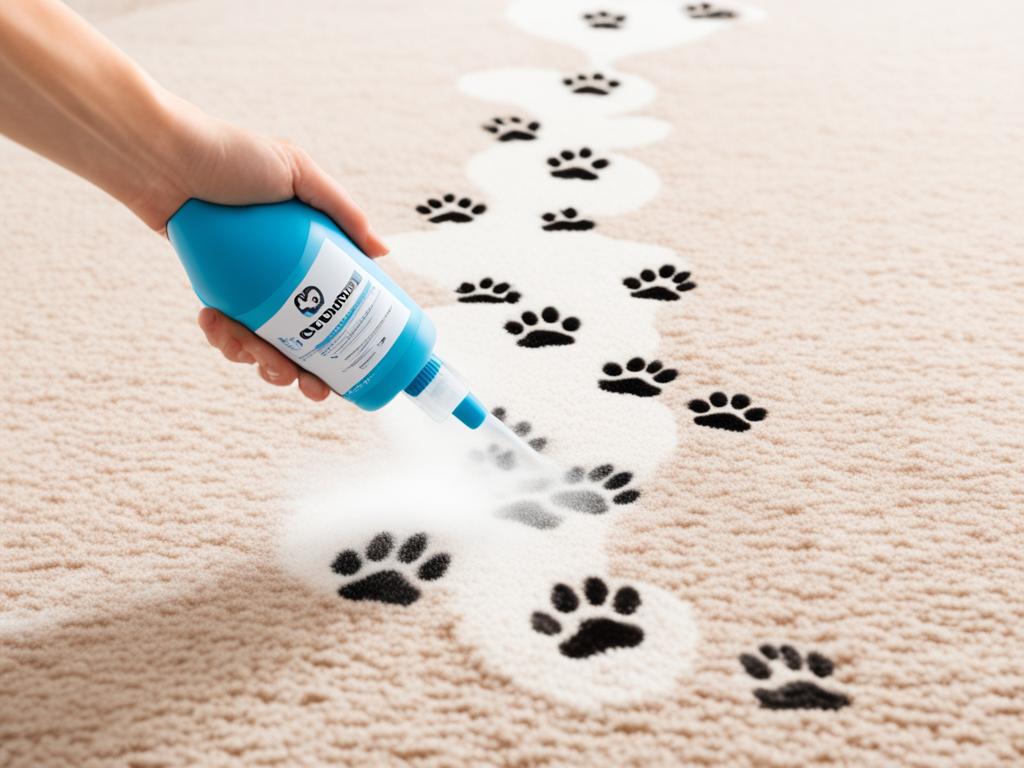
Disinfecting Yard and Outdoor Areas
Yard and outdoor areas can be prime locations for parvo contamination, putting dogs at risk. To effectively disinfect these areas and eliminate the presence of parvo:
-
Remove visible feces: Thoroughly and repeatedly remove all visible feces from the yard. This will help eliminate the primary source of contamination.
-
Flush with water: If possible, flush the yard with water to remove any remaining waste. This step helps to cleanse the area and remove any traces of parvo-contaminated material.
-
Use a virucidal disinfectant: To effectively eliminate parvo from the yard, use a proven virucidal disinfectant such as potassium peroxymonosulfate or accelerated hydrogen peroxide. Dilute the disinfectant according to the manufacturer’s instructions and saturate the yard, ensuring it remains saturated for the recommended contact time.
-
Maximize sunlight exposure: Whenever possible, maximize exposure to sunlight in the yard. Sunlight can help in the process of drying and disinfecting the area, aiding in the elimination of the parvo virus. However, note that complete disinfection may not be possible in yards with grass and dirt, as the virus can linger in these porous surfaces.
Disinfecting the yard and outdoor areas is crucial in preventing the further spread of parvo and protecting dogs from potential contamination.
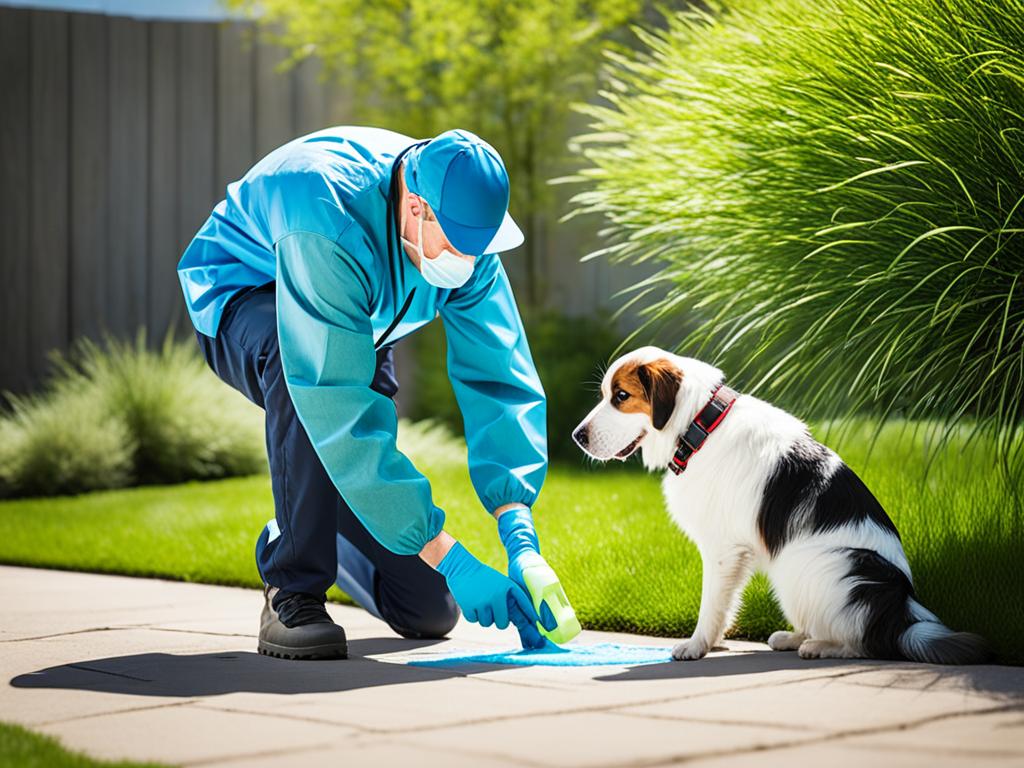
| Disinfection Steps for Yard and Outdoor Areas | Products/Actions |
|---|---|
| 1. Remove visible feces | Thoroughly clean and remove all visible feces to prevent the spread of the parvo virus. |
| 2. Flush with water | If possible, flush the yard with water to remove any remaining waste and cleanse the area. |
| 3. Use a virucidal disinfectant | Dilute and apply a virucidal disinfectant, such as potassium peroxymonosulfate or accelerated hydrogen peroxide, to effectively eliminate parvo from the yard. |
| 4. Maximize sunlight exposure | Maximize exposure to sunlight to aid in drying and disinfection, helping to eliminate the parvo virus. |
Cleaning and Disinfecting the House
Proper cleaning and disinfection of the house is crucial to prevent the spread of parvo. Follow these steps to clean and disinfect the house:
-
Clean thoroughly: Remove any visible feces or vomit from the house and clean all areas that have been contaminated. Pay special attention to porous surfaces like carpets, unpolished wood, laminate, and drywall.
-
Choose a virucidal disinfectant: Use a disinfectant that has been proven to kill parvo, such as bleach, potassium peroxymonosulfate, or accelerated hydrogen peroxide. Follow the instructions on the disinfectant for proper dilution and contact time.
-
Steam clean porous surfaces: For carpets and other porous surfaces, use a carpet cleaner with a disinfectant to steam clean the area. Spot test for staining before applying the disinfectant.
-
Dry thoroughly: After disinfecting, ensure that all areas are allowed to dry completely to prevent any remaining virus from surviving.
The Importance of Vaccination and Prevention
The best way to protect dogs from parvo is through vaccination. Puppies should receive their first vaccinations as early as 6 weeks old and complete the full vaccination series to build immunity. Booster vaccinations should be kept up to date to ensure continued protection.
Additionally, reducing exposure to potentially contaminated areas and practicing good hygiene, such as picking up and disposing of dog waste, can help prevent the spread of parvo.
“Vaccination is the key to preventing parvo and safeguarding your furry friends.”
Remember to consult with your veterinarian for specific vaccination recommendations and preventive measures for your dog.
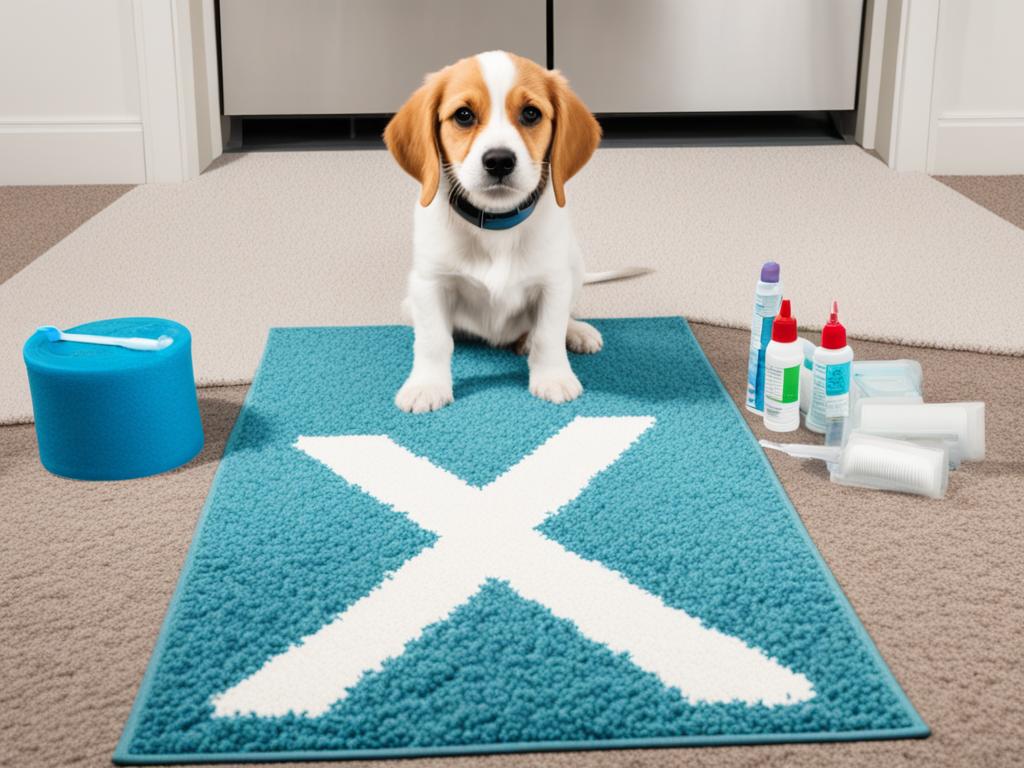
Takeaways:
- Vaccination is the most effective way to protect dogs from parvo.
- Puppies should receive their first vaccinations at 6 weeks old and complete the full series.
- Booster vaccinations should be kept up to date for continued protection.
- Reducing exposure to contaminated areas and practicing good hygiene can further prevent the spread of parvo.
- Consult with your veterinarian for specific vaccination recommendations and preventive measures.
Conclusion
Protecting pets from parvo is crucial to ensure their health and well-being. This highly contagious virus can survive in carpets and other surfaces for months, making proper cleaning and disinfection essential. By removing organic material, using effective virucidal disinfectants, and thoroughly drying areas, the spread of parvo can be prevented.
However, cleaning alone is not enough. Vaccination plays a vital role in protecting pets from parvo. Following the recommended vaccination schedule, especially for puppies, is crucial to build their immunity and provide long-term protection against the virus.
Additionally, practicing good hygiene and taking preventive measures can help in the prevention of parvo spread. By reducing exposure to potentially contaminated areas, picking up and disposing of dog waste, and maintaining regular veterinary visits, pet owners can significantly decrease the risk of their pets contracting parvo.
Remember, consulting with your veterinarian for personalized advice and guidance tailored to your pet’s specific needs is essential in effectively protecting them from parvo. Together, we can create a safe and healthy environment for our beloved pets.
